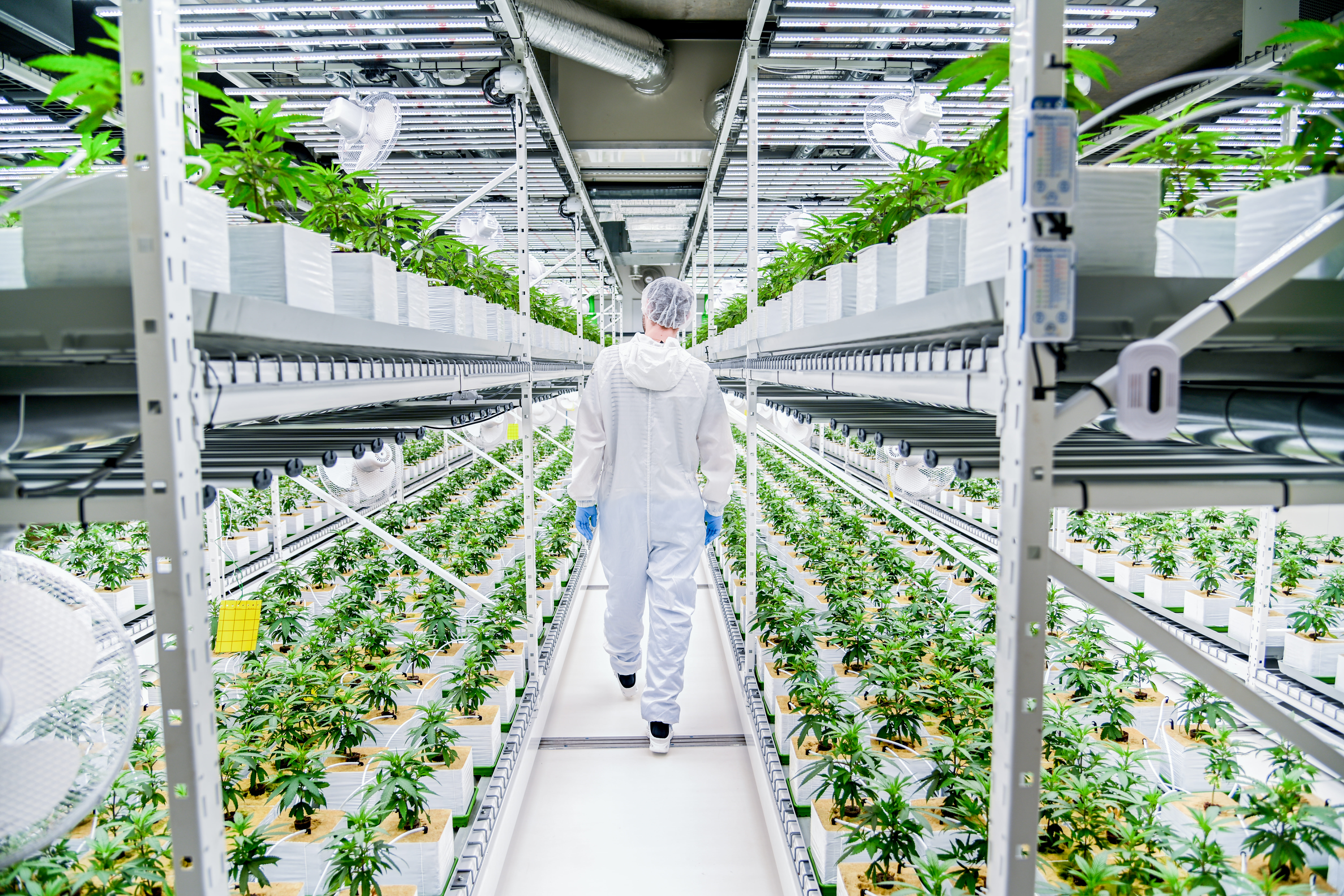
30 Mar Maximizing Yields with High Intensity Lighting
Editor’s note: As part of the upcoming release of the Fluence Cannabis Cultivation guide (available later this month), we have released best practices how to maintain a healthy grow environment (Part 1, Part 2). Published below, Part 3 of this series dives into two Q&A sessions with Fluence Project Manager, Sean Sangster, and how he advises Fluence customers on how to adjust and maintain a healthy cultivation environment for cannabis under high-intensity LEDs.
Q: Does VPD vary from plant to plant and leaf to leaf? If so how do we determine appropriate adjustments to stay in the goldilocks zone for VPD for a cannabis facility?
VPD is an indicator, not a direct measurement of transpiration in the plant. By understanding VPD, it helps direct adjustments that need to be made to environmental factors which maintain the optimal VPD. Understanding this, you should be seeing VPD as a guideline for the range of temperature and humidity you should be maintaining in your facility.
Q: How do you identify nutrient burn and what can a grower do to fix it or mitigate further problems?
A: First check the root zone. If you have a trellis in place, make sure to remove it and then see if there is any damage to the roots. You are looking for discoloration. White furry roots are ideal. If it is brown, orange, or there are little to no “hairs,” a common issue may be that soluble salts in the root zone are high. If this is the case, leach the media to check pH and EC. If you are above the range you would normally target, leach the solution down to ensure further damage does not occur.
Another way to diagnose the issue is to examine the leaf tissue itself, or edges of the leaf for “burn” (the edges will be brown/tan, dry and shriveled). Most states allow for cannabis leaves to be transported to a lab for analysis. A lab test is the best way to diagnose exactly what may be the root of the problem.
Q: What is the maximum PPFD you would recommend? Have you done trials and found a PPFD where it gets too high and thus inefficient/detrimental to the plant?
I’ve seen cultivators push 1,500 PPFD, which would be about 60-65 DLI, and they have seen great success. However, I’ve also heard of cases where researchers at universities are pushing their plants to 1,800+ PPFD and still haven’t found the saturation point for light. I’m excited to see where the research leads us, but I caution growers to think about the bigger picture and consider the rule of diminishing returns.
Q: Under high PPFD, how frequent is frequent water?
This would start with working with your irrigation provider and understanding the watering rates. This is pot-sized dependent, but typically we see our cultivators watering about 1L per plant per day. From there, you would break the 1L sum up and water throughout the photoperiod of the plant. For example, for a 12 hour photoperiod, we would break this up to be 12 watering events, which would administer anywhere from 2.0 – 2.5 oz of water per watering event, to give the plant a chance to absorb what is put in.
Q: What is the ideal PPFD in flower rooms without CO2 supplementation? There must be a tipping point no?
Once cannabis flowers hit 800-850 PPFD, it is crucial to get CO2 in the environment. Without CO2 you are doing two disservices to your business: the plants need it because of photos it otherwise limits it but under
Q: What are the main causes of light bleaching?
This is correlated with the xanthophyll cycle and goes beyond normal day-to-day growing knowledge. However, basically: understanding how chlorophyll A and B are overloaded by certain narrowband spectrums, which causes de-epoxidation, is what allows photobleaching to happen.
Q: I use Fluence solutions throughout my growing process and have noticed purple striations across my cannabis crops. Why is this and how do I remove this coloration?
A: This coloration occurs because it shows the presence of anthocyanin, an anti-oxidant present in blueberries, acai berries and in lesser amounts in many other fruits and vegetables.
If you would like to hear more from Sean Sangster, be sure to check out his talk about the 9 Key Parameters of Plant Production for commercial cannabis. Alternatively, you can learn more about how to grow successfully under high-intensity lighting by Adjusting Your Environment for cannabis production.
For more tips and best practices, keep an eye on the Fluence blog, as well as stay up to date via Instagram, LinkedIn, Facebook and Twitter to gain access to the Fluence Cannabis Cultivation Guide, which will be available on March 31.


